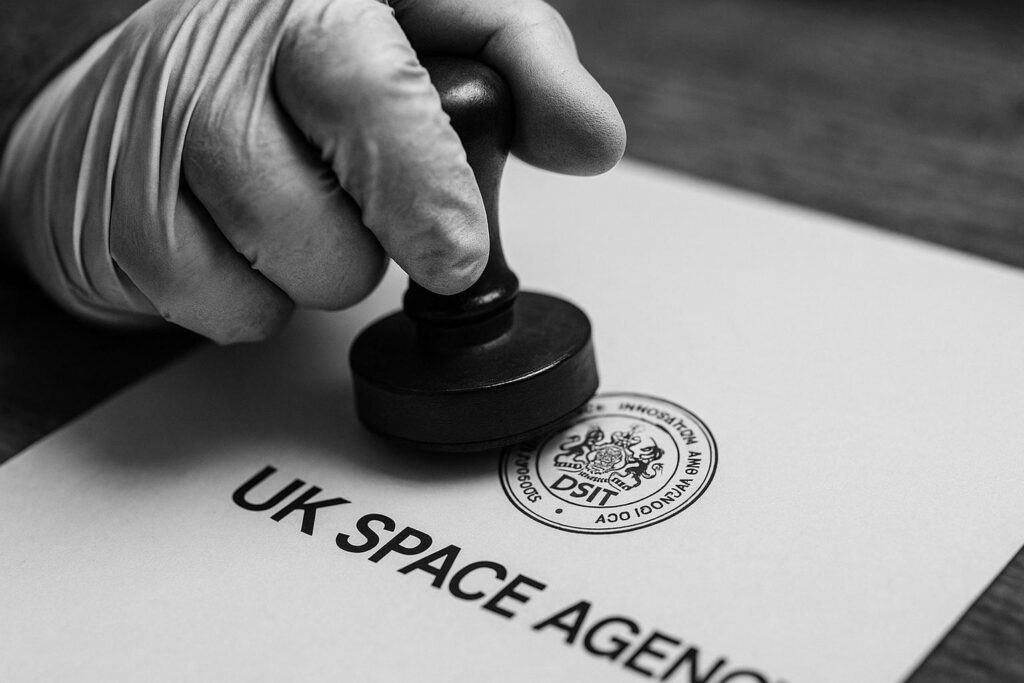The government plans to fold the UK Space Agency into the Department for Science, Innovation and Technology by 2026 in a bid to streamline policy and delivery, but industry players warn the move could threaten transparency and complicate funding negotiations with European partners.
LONDON — The government’s plan to fold the UK Space Agency into the Department for Science, Innovation and Technology has unleashed a cautious mix of optimism and concern among industry players. On the surface the move is pitched as a way to streamline policy and delivery, bringing space strategy under a single roof. But industry leaders warn that merging policy-making with delivery could undermine transparency and complicate delicate funding negotiations with European partners. The government’s timetable has DSIT absorbing the agency with a target date of 2026, while promising that the UK Space Agency’s name and brand will be retained and its expertise preserved as the two organisations work more closely together.
The administration’s rationale is that a unified unit will cut duplication, tighten ministerial oversight and accelerate decision-making. Space Minister Sir Chris Bryant told Civil Service World that bringing functions in-house would deliver greater integration and focus while preserving scientific expertise and ambition. Yet supporters of the status quo insist that independence matters for credibility and continuity. The Royal Astronomical Society has urged assurances that any savings stay within space science and technology development, warning that losing independence could jeopardise progress and long lead times for major programmes. Industry voices have framed the debate as a balancing act between leaner government and stable, transparent governance that can maintain momentum with international partners.
Looking ahead, there is broad agreement that consolidation could unify space interests across government, but many foresee risks if focus becomes diluted or day‑to‑day operations lose their bite. Dr Alice Bunn, chief executive of the Institution of Mechanical Engineers, described the consolidation as a chance to unite space interests across government while preserving scientific expertise. Since its founding in 2010, the UK Space Agency has played a key role in coordinating strategy, delivering flagship programmes and supporting domestic satellite activity, including Scotland’s ambitious launch aspirations; experts warn that absorbing UKSA could disrupt that momentum if execution falters. In Europe, attention to funding remains high: the European Commission has proposed dedicating a Defence, Space and Resilience window within the next long‑term budget, with leaders planning to discuss priorities at an upcoming summit. The move underscores a broader trend toward strengthening space capabilities and resilience across the bloc, even as national restructuring unfolds in London.
In this evolving landscape, UK policymakers must balance the gains of streamlined policy with the need to protect independence, transparency and continuity—elements that many in the sector say underpin effective collaboration with agencies like the European Space Agency and other international partners, and which will be tested in the months ahead as Europe’s funding framework takes shape.
📌 Reference Map:
Source Panel (for reference)
– 1. SpaceNews — Industry wary of UK Space Agency shake-up
– 2. Civil Service World — UK Space Agency to become unit within DSIT
– 3. Institution of Mechanical Engineers (IMEche) — UK space agency merger with DSIT
– 4. Innovation News Network — UK Space Agency to merge with DSIT in 2026 overhaul
– 5. Royal Astronomical Society — Savings scrapping UK Space Agency must stay science
– 6. Reuters — EU Commission defence-space funding proposal and future funding landscape
Source: Noah Wire Services
Noah Fact Check Pro
The draft above was created using the information available at the time the story first
emerged. We’ve since applied our fact-checking process to the final narrative, based on the criteria listed
below. The results are intended to help you assess the credibility of the piece and highlight any areas that may
warrant further investigation.
Freshness check
Score:
9
Notes:
🕰️ The narrative is very recent — multiple matching reports appeared on 20–21 August 2025 (SpaceNews, Innovation News Network, IMechE) with related commentary from the Royal Astronomical Society on 21 Aug 2025. ✅ Earliest substantially similar publication located: 20 August 2025 (Innovation News Network published 20 Aug 2025; SpaceNews coverage dated 21 Aug 2025). ⚠️ The content is being widely republished across trade sites and institutional press releases within a narrow window; this looks like coordinated reporting on the same government announcement rather than long‑running recycled content. 📰 The Royal Astronomical Society press release (21 Aug 2025) and other institutional reactions indicate the narrative partly stems from official/government communications (press briefings/announcements), which explains rapid, overlapping coverage and supports a high freshness score.
Quotes check
Score:
6
Notes:
⚠️ Identical or near‑identical quotes attributed to Space Minister Sir Chris Bryant and UKSA/DSIT officials appear across multiple outlets (Innovation News Network, IMechE, SpaceNews). The ministerial quote (“Bringing things in‑house means we can bring much greater integration and focus…”) appears in several reports — suggesting reuse of a government statement or press briefing. 🕵️ Earliest matches of these quotes found in initial coverage on 20–21 Aug 2025. ✅ No unique or exclusive quotes surfaced that are traceable to an original embargoed interview — most wording matches press lines, implying the quotes likely originate from a single government communication rather than original on‑the‑record interviews. If the article claims exclusive interviews, that would be inconsistent with the web record.
Source reliability
Score:
8
Notes:
✅ Reporting is echoed by reputable outlets and institutions: Reuters (coverage of EU funding context), SpaceNews (specialist trade outlet), the Royal Astronomical Society (official press release), Institution of Mechanical Engineers (IMEche) and Innovation News Network. ⚠️ Some coverage is on trade/interest sites that repackage press lines — but the presence of Reuters and formal institutional press statements strengthens reliability. ❗ No evidence that the primary organisations named (UK Space Agency, DSIT, RAS, IMEche) are fabricated — all are verifiable and have official online presence. Overall reliability is good, but readers should note that many pieces appear to rely on a shared government announcement.
Plausability check
Score:
8
Notes:
✅ Claim that DSIT will absorb the UK Space Agency with a target date of April 2026 is corroborated across multiple reports and institutional commentary (consistent dates and framing found in Innovation News Network, IMechE and RAS). ✅ The wider European funding context (European Commission proposing a defence/space window) is supported by Reuters (25 Jun 2025) and Commission communications. ⚠️ The narrative includes typical stakeholder concerns (independence, long programme lead times) that align with historical industry reactions — plausible and consistent. ⚠️ No major contradictory data found in contemporaneous coverage, but because much text mirrors government lines and press releases, any dramatic or exclusive claims not corroborated elsewhere should be treated cautiously.
Overall assessment
Verdict (FAIL, OPEN, PASS): PASS
Confidence (LOW, MEDIUM, HIGH): HIGH
Summary:
✅ The narrative is timely and corroborated by multiple reputable organisations and outlets (SpaceNews, Innovation News Network, IMechE, Royal Astronomical Society, Reuters). 🕰️ Earliest substantially similar reporting identified on 20 August 2025; much coverage between 20–21 Aug 2025 shows the story is fresh but widely republished from the same announcement. ⚠️ Key risk: quotes and framing largely reflect a single government communication/press lines that have been reused across publications — identical wording appears in several places, so the article is not exclusive and is likely based on official statements. ⚠️ No evidence of fabricated entities or false chronology, but because the narrative heavily reuses official lines and press releases, editors should flag reused quotes and note that the strength of the report rests on official announcements rather than independent investigative reporting. ‼️ Recommendation: publish with clear attribution to the government announcement and institutional reactions; highlight that many outlets reproduced the same quotes and that the April 2026 absorption date originates from the government timetable announced in Aug 2025.






